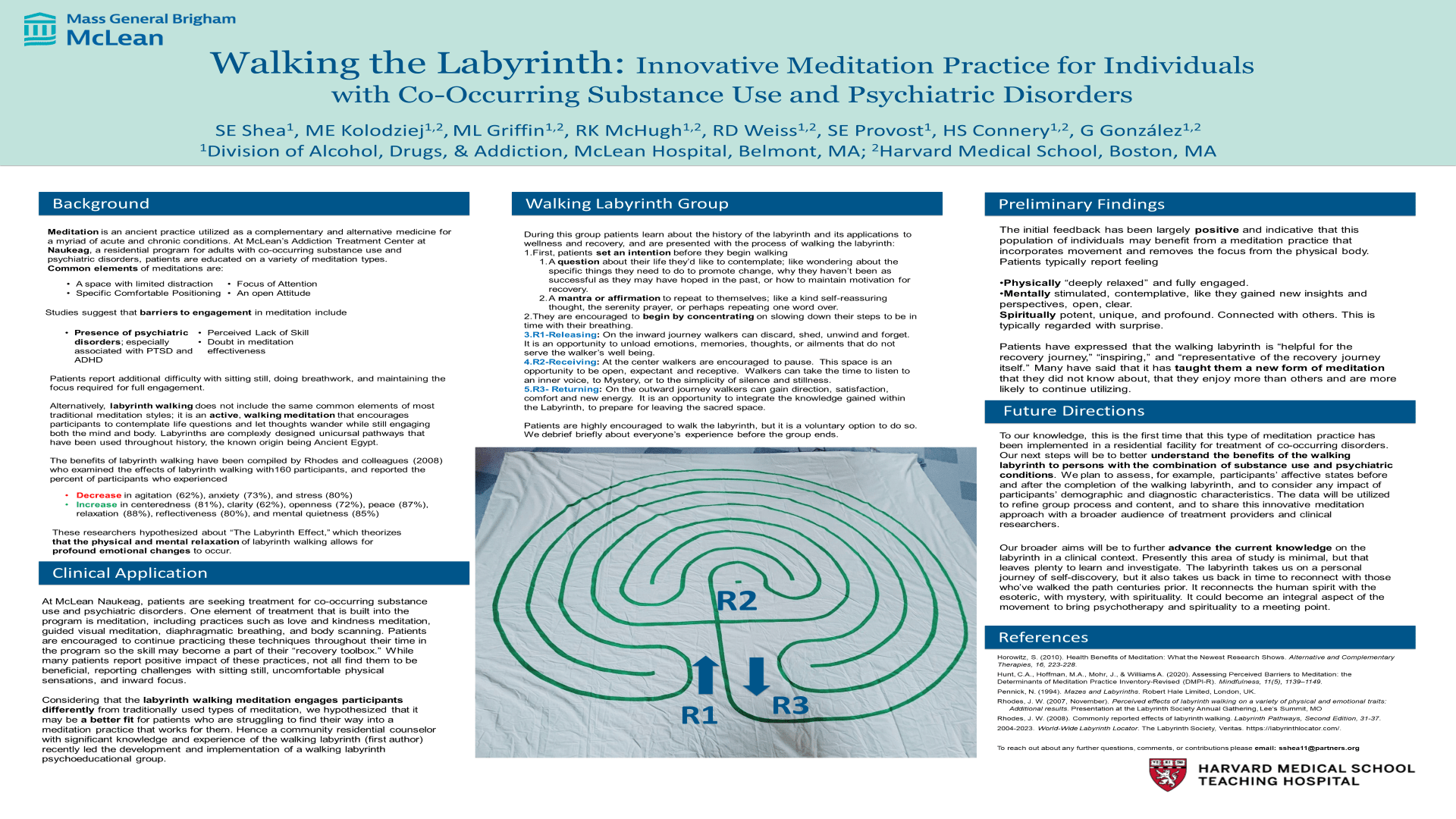Scientific Abstract
Background: At McLean’s Addiction Treatment Center at Naukeag, a residential program for adults with co-occurring substance use and psychiatric disorders, patients are educated on a variety of meditation types. One active and guided form of meditation known as labyrinth walking differs from more traditional meditation types which typically include space with limited distraction, specific comfortable positioning, and focus of attention. Studies suggest that barriers to engagement in meditation include presence of psychiatric disorders, a perceived lack of skill, and doubt in meditation effectiveness. Given that the labyrinth differs from the common structure of meditation, it may provide a more apt avenue for individuals who struggle to engage with more traditional meditation styles to develop a mindfulness practice that works for them.
Method: This study will be done using a mixed methods research design to combine qualitative open-ended responses and quantitative close-ended responses. We plan to assess participants’ affective states before and after the completion of the walking labyrinth, and to consider any impact of participants’ demographic and diagnostic characteristics. The questionnaire is currently under development. A community residential counselor runs an educational labyrinth group that includes an opportunity to walk the path.
Results: The initial feedback has been largely positive and indicative that this population of individuals may benefit from a meditation practice that incorporates movement and removes the focus from the physical body. Patients typically report feeling physically “deeply relaxed” and fully engaged; mentally stimulated, contemplative, open, and clear; and spiritually connected, unique, and potent.
Conclusions: To our knowledge, this is the first time that this type of meditation practice has been implemented in a residential facility for treatment of co-occurring disorders. Our next steps will be to better understand the benefits of the walking labyrinth to persons with the combination of substance use and psychiatric conditions. We also hope to expand the knowledge on the labyrinth as a meditative tool in a clinical context.
Search posters

